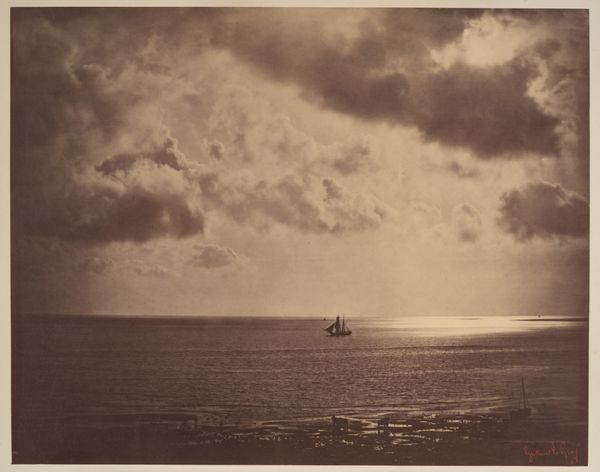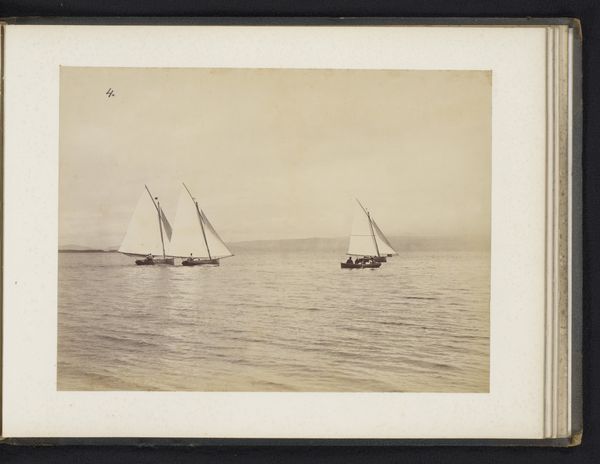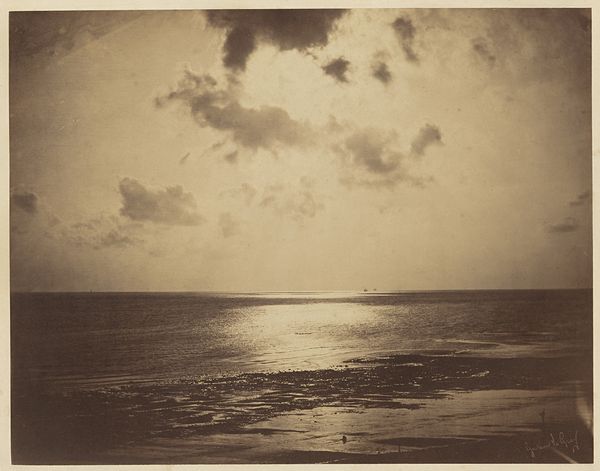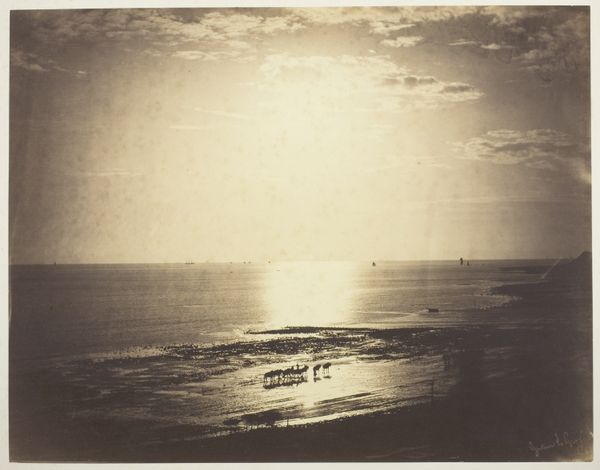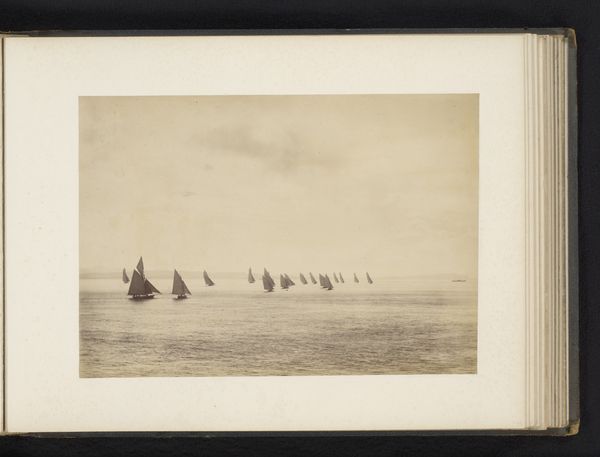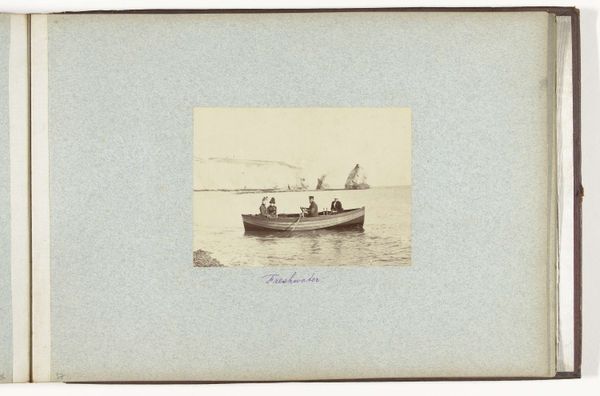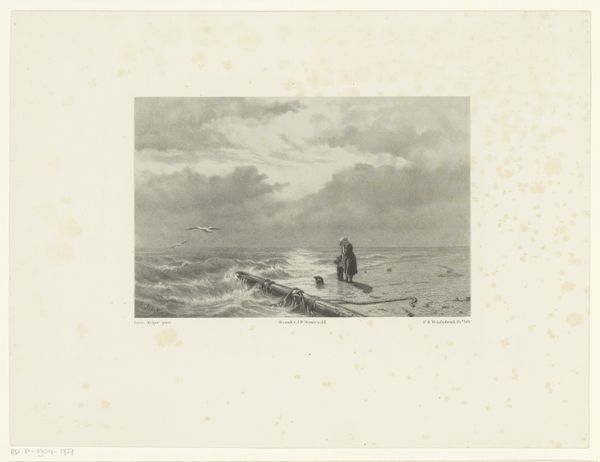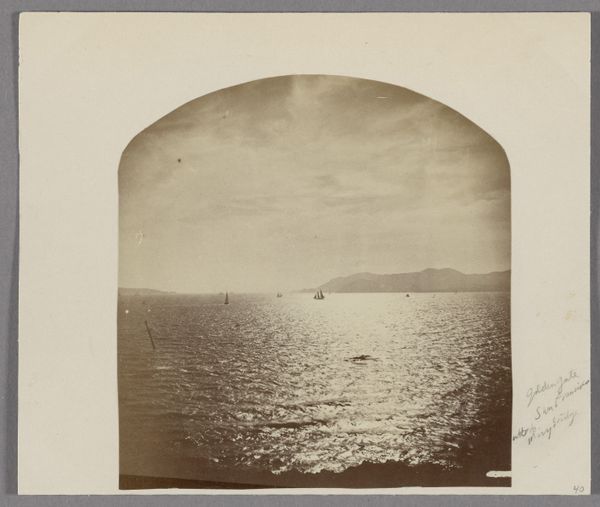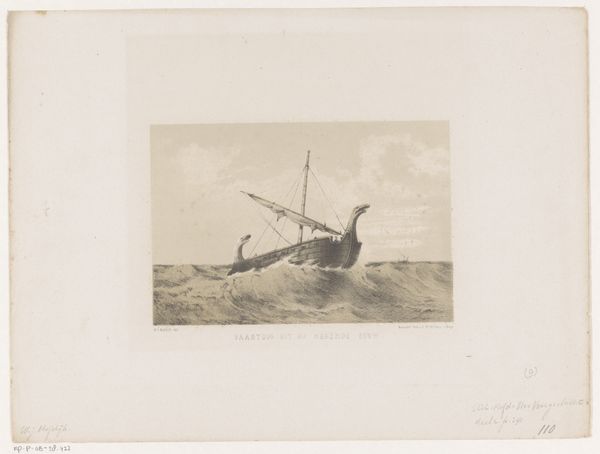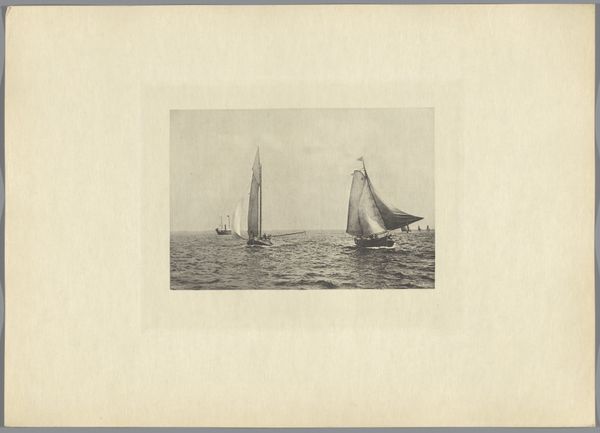
Dimensions: Mount: 14 3/4 in. × 18 13/16 in. (37.4 × 47.8 cm) Image: 12 1/2 × 16 7/16 in. (31.7 × 41.7 cm)
Copyright: Public Domain
Curator: What strikes you most about Gustave Le Gray's photograph, "Two Ships Heading Away from Shore," created between 1856 and 1857? It's currently held in the collection of the Metropolitan Museum of Art. Editor: It has this lonely beauty to it, almost mournful. The waves churning in the foreground lead to these two distant ships swallowed by the vast sky; it's a bit like watching something fade from memory. Curator: Indeed. Le Gray was known for his combination printing, a process crucial for achieving the dramatic sky and well-exposed sea in images like these. Remember, capturing both simultaneously with the materials of the time was incredibly challenging. How was he able to master such dramatic scenes of maritime power with what was a clunky photographic technique by modern standards? Editor: Knowing that makes me see the image differently, imagining Le Gray in his darkroom piecing together the separate negatives like a strange sort of collage. You realize it’s not just about observation but about actively building the reality he wants to present, which also brings up the question about the labor that created the art. Curator: Absolutely, his labor and his chemical processes, crucial to his artistic statements. This gelatin-silver print reflects a very hands-on, materially intensive practice. The very act of its production becomes part of the photograph's significance, almost elevating the status of craft into fine art. Editor: That is what strikes me—not simply that it is just craft. What shines about this romantic piece is that even though photography during that time tried to catch every detail of its object as sharply and as accurately as possible, it doesn't just mechanically document ships and sky. Instead it evokes this sense of longing and impermanence and a human imprint of the author. It plays with darkness and lightness with its own hand. It goes far beyond capturing visual data. Curator: Considering the historical context, that is the birth of industrial photography and the rapid development of photographic printing, and even within these early methods, these tools for artistic expressions… Editor: And somehow that makes the work even more potent and moving. It seems fitting the ships are headed toward the horizon since time itself flows toward its horizon for this photo to find new context and resonance as it floats ashore toward our present.
Comments
No comments
Be the first to comment and join the conversation on the ultimate creative platform.

